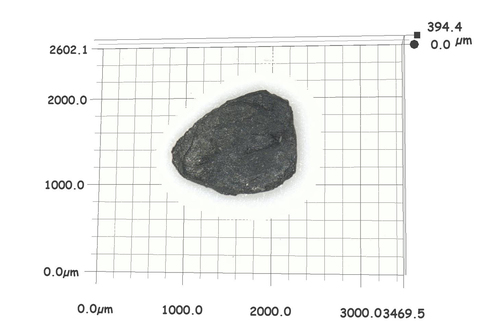
Performed comprehensive experimental study of londsdaleite-rich diamond crystals from the Popigai meteoritic impact crater: Kirill Yusenko from BAM’s structure analysis team, working at the high-pressure beamline ID15B at the European Synchrotron Radiation Facility (ESRF)
Source: Structure analysis division, BAM
Kirill Yusenko is part of the structure analysis team at BAM. Together with colleagues from the Kyungpook National University, Novosibirsk State University, Sibirian Federal University, Tomsk State University and European Synchrotron Radiation Facility (ESRF) he took a number of representative impact diamonds from the Popigai astrobleme and investigated their compressibility and microstructure as well as mineral inclusions. The Popigai crater in North Siberia is one of the largest meteorite craters in the World; a large diamond deposit is associated with the impact. Popigai diamonds have a large concentration of structural defects, intergrowths of lonsdaleite phase – the hexagonal form of diamonds – and inclusions of various minerals. It has been proposed that lonsdaleite diamonds should have higher hardness and smaller compressibility in comparison with pristine cubic diamond.
The team probed diamonds under compression and showed that the compressibility of the Popigai diamonds is at least not lower in comparison with cubic diamonds. By using combinations of complementary approaches – diamond anvil cells and micro-beam diffraction and X-ray fluorescence (XRF) – they investigated the complex nature of natural ultrahard materials.

Image of a probed diamond
Source: Structure analysis division, BAM
Ultra-hard materials are important for the development of new tools and mechanically stable parts. This study of unique natural ultra-hard material might open new doors in their practical applications as abrasive materials.
We asked Kirill Yusenko some further questions about his interdisciplinary research and how synchrotron-based techniques at ESRF and BESSY II helps him investigating.
Kirill, what is your research about?
In my research I cover interdisciplinary problems from chemistry, crystallography and materials science. I investigate novel materials under extreme impacts including high-temperature high-pressure conditions. I also investigate materials and chemical reactions under working conditions to be able to understand detailed mechanisms of solid-state reactions using in situ techniques.
Where did you start your scientific career and how was it linked to BAM?
I started my research career in Russia. After my thesis defense in Novosibirsk, I performed a number of research projects in Germany, Norway and Wales. As soon as my research projects require active regular use of synchrotron-based techniques I moved to BAM to be able to develop projects based on the equipment of BAMline located at the BESSY II synchrotron facility of Helmholtz-Zentrum (HZB) in Berlin-Adlershof.
How does synchrotron-based techniques help you investigating?
Synchrotron beam helps me to reach resolution unavailable for laboratory-based techniques. Using synchrotron beam I probe materials under extreme conditions to be able to understand their formation mechanisms and performance. Composition-structure-properties relations obtained in a broad range of conditions open new possibilities in materials design and may help to obtain new materials as well as improve important functional properties of existing systems.
What is your current research about and what’s next?
My current project includes investigation of stable luminescent sols of nanoparticles in organic media. I investigate formation and stability of nanostructured materials to understand composition-structure-properties relations in important class of novel materials for energy conversion. Our current model systems include two-component metal fluorides in organic solvents. Further studies will include multicomponent materials which are more attractive as potential components for energy conversion devices.


